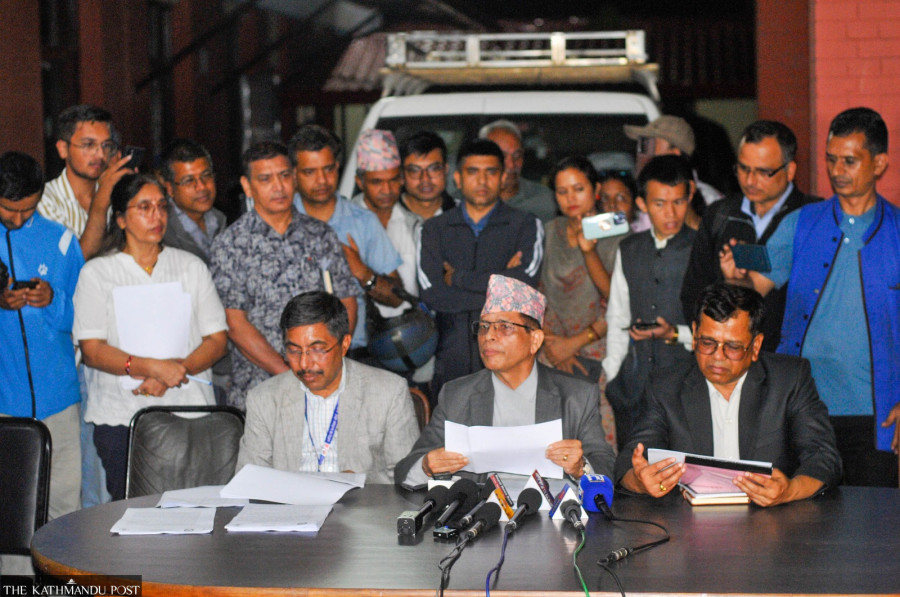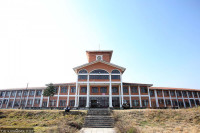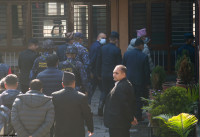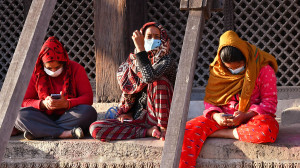National
SEE results improve from 47.87 to 61.81 percent, stun experts
With only 17 percent non-graded students, Bagmati is best performer among seven provinces. Madhesh comes last.
Binod Ghimire
Registering a significant improvement in the School Education Examination (SEE) results, 61.81 percent of students secured a Grade Point Average (GPA) above 1.6, which is necessary to study at a higher level. This success rate is several notches up from last year’s 47.87 percent.
Announcing the results of the tests held in March, the National Examination Board on Friday said 271,299 examinees secured the passing grades while 167,597 were non-graded. Only 438,896 among 514,017, who had registered for tests, sat for the examinations. Board officials hailed the initiatives of different tiers of government for the improvement in the results.
“The federal and local governments’ initiatives have largely paid off, though the results are not fully satisfactory,” said Mahashram Sharma, chair of the board, while announcing the results. He also said that the students have started making more effort after the board adopted the policy to disqualify the poor performers from studying grade 11.
Starting last year, the board decided to include non-graded tests, meaning the students would have to retake their exams. This time, those not graded can take supplementary exams, which will start on August 14.
As per the results, 48,177 students managed to secure 3.6 to 4.0 GPA, which is the highest category. While 81,385 examinees got between 3.2 and 3.6 GPA, 89,124 secured between 2.8 and 3.2 GPA. Those receiving 2.4 to 2.8 GPA stood at 48,479 while 4,126 got between 2.0 and 2.4 GPA. Just 8 got 1.6 to 2.0 GPA, the lowest grades required to study grade 11.
Province-wise, Madhesh does the worst. As many as 42,779 of 59,749, or over 71 percent examinees from the province, have been non-graded. Bagmati, as in the previous years, had the best performance: only 20,947 among the 119,517—17 percent—were non-graded.
Prime Minister KP Sharma Oli has repeatedly vowed to work to improve the SEE results. Ever since taking charge as prime minister in July last year, he had been claiming that SEE pass rates would be around 70 percent under his tenure. But he had lowered the figure two weeks back.
Addressing the Kathmandu University convocation on June 13 he had predicted a 60 to 65 percent success rate this time.
No sooner were the results published, Oli was quick to claim credit. While also congratulating the students and teachers, he wrote on his Facebook, “The effort we put in last year to improve the results has paid off.”
Those who have followed the school education closely do not see the increment as ‘natural’. Binay Kusiyait, professor at the Tribhuvan University who has done several school education-related researches, said there were no serious efforts, other than the claims, to improve the learning environment in order to significantly raise the success rate.
“I am happy to see improvement in the pass rate. But I am not convinced it is a natural growth,” he told the Post. “Has the learning environment improved? No. Did the budget for quality learning increase? No. Were there more teachers’ training? No. Then what magic formula has led to this big improvement? The government needs to have convincing answers.”
Over the years, educationists have been saying the education sector cannot improve without increasing the budget for quality education and filling the vacant teachers’ positions. The education budget, for years, has been hovering around 10-11 percent—of which a big chunk goes to pay teachers’ salary.
Similarly, thousands of teachers’ positions remain vacant. Most schools across the country are short on teachers, mostly for Mathematics, English and Science, the subjects with the highest failure rates. Different reports by the ministry have pointed to an acute shortage of subject teachers.
In 2009, a panel led by Janardan Nepal, then joint secretary at the Ministry of Education, had suggested the government add 50,000 new teacher positions from the pre-primary level to grade 12 levels. The report was not implemented, and 10 years later, in 2019, the government went on to form another panel led by Sharma (the current board chair who hadn’t been appointed to the board then).
Sharma’s committee had suggested the creation of 57,056 additional positions to ensure a smooth teaching-learning process at schools. But no effort has as yet been made to recruit the necessary teachers.




 11.12°C Kathmandu
11.12°C Kathmandu













%20(1).jpg&w=300&height=200)

